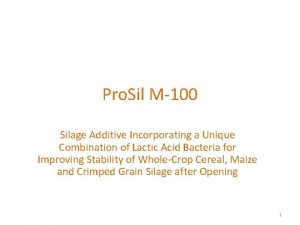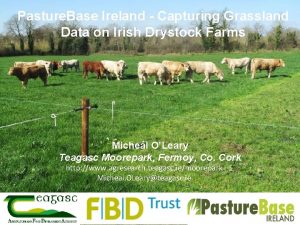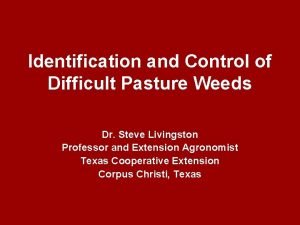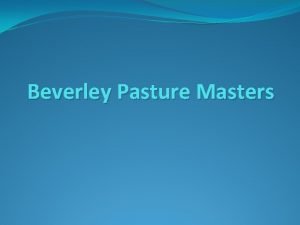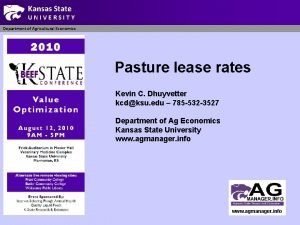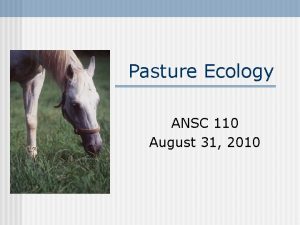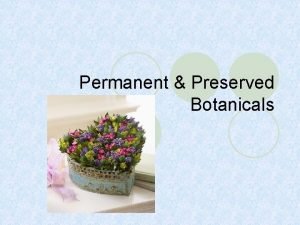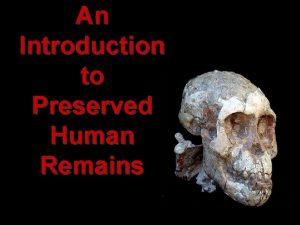Silage is preserved pasture Making silage is an









- Slides: 9

Silage is preserved pasture. Making silage is an important way for farmers to feed cows and sheep during times when pasture isn't good, such as the dry season.

• Silage is pasture grass that has been 'pickled'. It is a method used to preserve the pasture for cows and sheep to eat later when natural pasture isn't good, like in the dry season. • The grasses are cut and then fermented to keep as much of the nutrients (such as sugars and proteins) as possible. • The fermentation is carried out by microscopic organisms living in the grass.

• The process must be carried out under acidic conditions (around p. H 4 -5) in order to keep nutrients and provide a form of food that cows and sheep will like to eat. • Fermentation at higher p. H results in silage that has a bad taste, and lower amounts of sugars and proteins.

How is silage made? 1. Preparing the grass First, the pasture must be cut when the grasses contain their highest nutrient levels. This is usually just before they are fully mature. This is important because all forms of preserved grass, such as hay and silage, will have lower amounts of nutrients than fresh pasture, so everything must be done to make the end product be as nutritious as possible.

• Grass is allowed to wilt in the field for a few hours to reduce the moisture content to around 60 -75%. This moisture level will allow for optimum fermentation. • If the grass is left out longer, it may get too dry, or it may get rained on - and both these will reduce proper fermentation. Also, the longer the grass is left uncut, the higher the loss of nutrients.

2. Fermentation: • The cut grass is chopped into even smaller pieces and then compacted to get out as much oxygen as possible (this is important because the microorganisms, called lactic acid bacteria, that are needed to carry out the fermentation like living in oxygen-free environments). • If the silage is to be stored piled in a large pit, tractors and other machinery are usually driven over the grass pile until it is firm. • If the silage is stored as bales, the baling machines will compact the grass as they work.

• The next step is to seal the compacted grass with plastic to keep oxygen out. • Mounds of silage are covered with huge polythene (plastic) sheets and weighted down (usually with old tyres) to ensure maximum compacting; bales are covered with a plastic wrapping.

The problem with oxygen • Removing and keeping out oxygen is a key part of making silage. This is because fermentation has to happen under anaerobic (oxygen-free) conditions, or the correct type of microorganisms won’t grow. • While oxygen remains, plant enzymes and other bacteria and microorganisms react with the plant sugars and proteins to make energy, reducing the amounts of these nutrients in the grass.

• Once all of the oxygen is used up, lactic acid bacteria start to multiply. These are bacteria that are needed to make the silage, and they turn the plant sugars into lactic acid. This causes the p. H to drop (the mixture because more acidic). Once the p. H is around 4 -5, the sugars stop breaking down and the grass is preserved until the silage is opened and exposed to oxygen. • If the p. H isn’t low enough, a different kind of bacteria will start fermenting the silage, producing by-products (like ammonia) that taste bad to cows and sheep.
